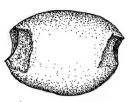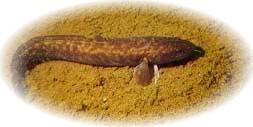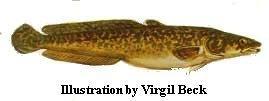
William A. Fox
July, 1982
It was one of those typical July days in southern Ontario - a sultry heat, only relieved by cool lake breezes as Dr. Michael Spence and I headed out on Long Point Bay with Corporal Varden and Constable McCallum of the Ontario Provincial Police, Norfolk Detachment (Fox 1982:12). The previous October, the London Office of the Ministry of Culture and Recreation had received yet another shipment of unidentified human bone from the office of the Provincial Forensic Pathologist in Toronto. As it seemed likely that the remains were of First Nations individuals, Chief Wellington Staats of Six Nations had been contacted and consulted as to process. Little did we realize that this would be the beginning of a multi-year program of site survey and rescue excavation activities on Long Point (Fox 1986, MacDonald 1986, Fox and Molto 1994).

The previous July, a fishing party from Buffalo, NY had stumbled upon a human skull and reported the occurrence to Con. McCallum. As our boat rounded Pottohawk Point and headed to the discovery site, sparsely vegetated dunes and sand beaches stretched before us . Gliding into the warm shallows, we disembarked to begin our investigation. Dark organic layering was immediately evident in the eroding face of a low dune surmounted by a lone pine tree.

Soon we found notched pebble net sinkers flint flakes and a flint knife, pottery cooking vessel fragments and abundant fish bone.

We made a tape and compass sketch map and recorded several bank profiles. Profile 1 documented what appeared to be a pit feature extending 17cm below the bottom of a black surficial stratum, some 17 to 20 cm in thickness. No human remains were discovered along the exposed bank, although a few skeletal elements were recovered from under the sand just off shore (Molto 1983) The ceramics suggested that this fishing camp dated to about 1000-1200 years ago. But, perhaps the most impressive aspect of the site was the abundance and excellent preservation of the fish bone. Fully articulated vertebral columns exposed in the bank! In my twenty years of Ontario field experience, I had never seen anything like this.
 We left the Varden site with mixed feelings later that afternoon. No
intact burials had been found, and it appeared likely that any further
human remains would be discovered only in a disturbed context in the
lake shallows.
On the other hand, we had documented the first archaeological site
located on Long Point - an 1100 year old encampment remarkably near the
present tip of the point. This raised some interesting questions
concerning the genesis and rate of growth of Long Point itself. But the
question most begging for an answer was, why were those people
discarding virtually intact fish of a fairly large size on this site?
Were they filleting these fish? Exactly what species were they? Rosemary
Prevec (1983) was able to supply some of the answers in her faunal
report.
We left the Varden site with mixed feelings later that afternoon. No
intact burials had been found, and it appeared likely that any further
human remains would be discovered only in a disturbed context in the
lake shallows.
On the other hand, we had documented the first archaeological site
located on Long Point - an 1100 year old encampment remarkably near the
present tip of the point. This raised some interesting questions
concerning the genesis and rate of growth of Long Point itself. But the
question most begging for an answer was, why were those people
discarding virtually intact fish of a fairly large size on this site?
Were they filleting these fish? Exactly what species were they? Rosemary
Prevec (1983) was able to supply some of the answers in her faunal
report.
Rosemary’s analysis of the 237 faunal elements recovered
during our investigation indicated that a little over 70% derived from
fish. This was no surprise. The surprise was the fact that over 97% of the identified
fish bone were from burbot - a species which prefers a cold water
habitat! Burbot are members of the cod family - Gadidae and have a
circumpolar distribution (Scott and Crossman 1973:640) . They are known
also as eelpout, ling, lawyers (odd, they’re not bottom feeders), loche,
and made (in Finland).
The surprise was the fact that over 97% of the identified
fish bone were from burbot - a species which prefers a cold water
habitat! Burbot are members of the cod family - Gadidae and have a
circumpolar distribution (Scott and Crossman 1973:640) . They are known
also as eelpout, ling, lawyers (odd, they’re not bottom feeders), loche,
and made (in Finland).
Long Point Bay is not a noted cold water habitat. What was the answer? The only time that these deep water fish would be available in the Long Point shallows would be when they spawned at night in late March (Clemens 1951). Early spring could be pretty chilly out near the east end of Long Point and travel by (dugout?) canoe at that time might be precarious, yet the evidence for such visits was suggestive, if not convincing. I pictured warmly clothed people in canoes playing out nets by torch light with chilled fingers, and then drawing the nets into shore to expose a writhing mass of fresh water cod on the beach.
So, the Varden site fishermen had been harvesting large numbers of
burbot. What could be the attraction, given the relatively low meat to
body weight ratio of the species and the likelihood that fishing at the
end of Long Point had not been particularly comfortable?  Furthermore,
burbot meat is generally of lower nutritional value than the flesh of
many of the species which could have been harvested along Long Point at
warmer times of the year and at sites closer to the mainland. A hundred
grams of burbot meat provides only 89.9 calories of food value, as
compared to 93.2 calories for walleye, 95.1 for channel catfish and
119.1 calories for the same portion of trout (CNN Food Central WEB
site). Could this have been a food source that was only used when the
inhabitants of the Long Point area were faced with winter starvation?
These fish are relatives of the salt water cod, I mused, and cod liver
oil is a highly regarded vitamin A and D source. Perhaps the articulated
vertebral columns signaled filleting activity, or perhaps some fish were
being gutted for the liver alone. Ethnographic and ethnohistoric sources
have documented the importance of fats and oils (ie. nut oils - Ozker
1982:35-37) in Native diets, particularly over the winter period. Would
this have justified the discomforts and potential risks of an early
spring trip to the tip of Long Point? I thought this a possibility and
suggested it to the faunal analyst (Prevec 1983:4).
Furthermore,
burbot meat is generally of lower nutritional value than the flesh of
many of the species which could have been harvested along Long Point at
warmer times of the year and at sites closer to the mainland. A hundred
grams of burbot meat provides only 89.9 calories of food value, as
compared to 93.2 calories for walleye, 95.1 for channel catfish and
119.1 calories for the same portion of trout (CNN Food Central WEB
site). Could this have been a food source that was only used when the
inhabitants of the Long Point area were faced with winter starvation?
These fish are relatives of the salt water cod, I mused, and cod liver
oil is a highly regarded vitamin A and D source. Perhaps the articulated
vertebral columns signaled filleting activity, or perhaps some fish were
being gutted for the liver alone. Ethnographic and ethnohistoric sources
have documented the importance of fats and oils (ie. nut oils - Ozker
1982:35-37) in Native diets, particularly over the winter period. Would
this have justified the discomforts and potential risks of an early
spring trip to the tip of Long Point? I thought this a possibility and
suggested it to the faunal analyst (Prevec 1983:4).
